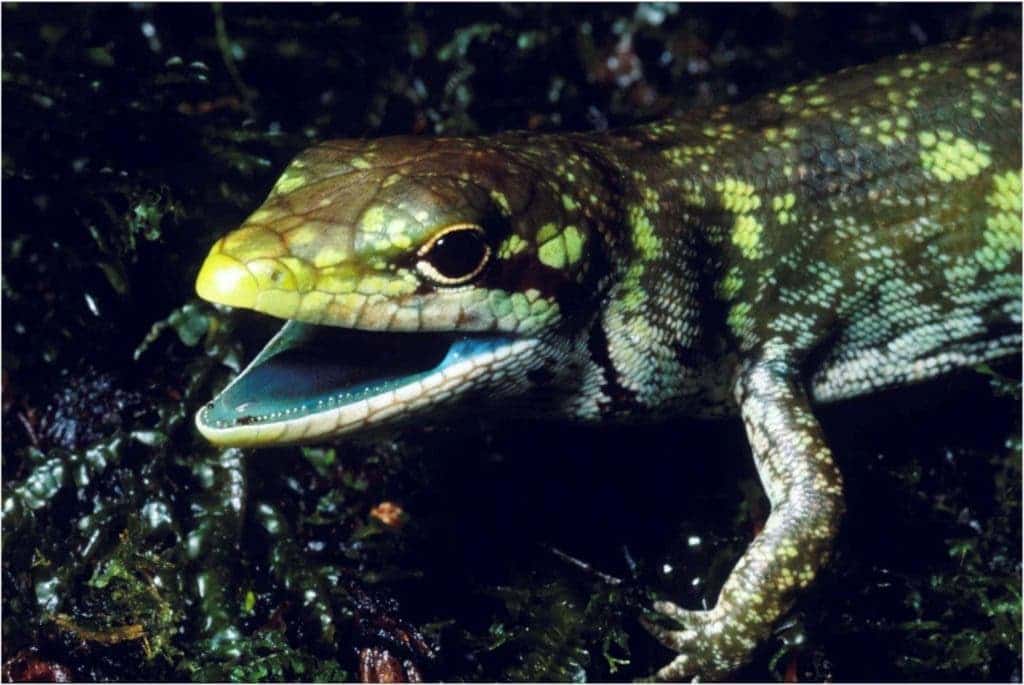In humans, blood is red due to the presence of hemoglobin molecules. However, animals may have red, blue, yellow, orange, violet, or even colorless blood — and if you’re a New Guinea skink, it can be green, too. According to a new study, the lizards’ blood is lime-green due to high levels of biliverdin, or green bile pigment. Although the pigment is toxic and causes jaundice, the lizards are surprisingly healthy even when the levels of green bile are 40 times higher than the lethal concentration in humans.

Researchers at Louisiana State University led by Professor Chris Austin went on numerous expeditions to the megadiverse island of New Guinea, documenting reptile and amphibian diversity. The goal of their new paper was to investigate the evolutionary history of green blood, which is present in several species of New Guinea lizards. Of the 51 species of skinks the researchers surveyed, six were green-blooded (Prasinohaema), two of which were new species to science.
“Fieldwork in Papua New Guinea is incredibly difficult due to the lack of a major road system so it means flying into the remote highlands in small planes landing on grass airstrips and then walking, sometimes for several days, to get to field sites,” Austin told ZME Science. “From earlier genetic results it seemed like there were multiple independent origins of green blood, but it was not until Zach Rodriquez (first author) generated and analyzed this huge genome-scale dataset that we had very strong evidence for the evolutionary history of this enigmatic physiological trait. His first results really were exciting!”
The investigation examined DNA samples from 27 green-blooded lizards and 92 closely related red-blooded lizards, showing that there are four separate lineages of green-blooded lizards, which all likely shared a common red-blooded ancestor. Because green blood emerged independently in various lizards, evolving four separate times, this suggests that the feature may have an adaptive value.
Although bile pigments are known to be toxic for many animals, some insects, fish, and frogs actually benefit from having the bile pigment in their blood, which acts as an antioxidant that neutralizes free radicals and prevents disease during in vitro fertilization. However, the function of bile pigment in the New Guinea lizards studied by the researchers is unknown.
“The physiological and/or ecological importance of biliverdin accumulation is unknown. This enigmatic trait may or may not be an adaptation. It is, however, plausible that small increases in biliverdin conferred some selective advantage, and that over evolutionary time even greater concentrations of biliverdin conferred an even greater advantage,” Austin said.
Green-blooded skinks may be important to medicine because a similar liver product called bilirubin is known to be toxic to human malaria parasites. Ongoing research will examine the potential effects of green blood pigment on malaria.
“Research on lizards from halfway around the world has implications for human health, thus our research shows how basic discovery science is important. Jaundice is a common problem for newborns, affecting 60% of full-term babies and 80% of premature babies. Importantly, our research will lay the foundation for an integrative way to think about bile pigments and jaundice and in doing so contribute to biomedicine and potentially improve human health down the road,” Austin said.
Findings appeared in the journal Science Advances.
Was this helpful?